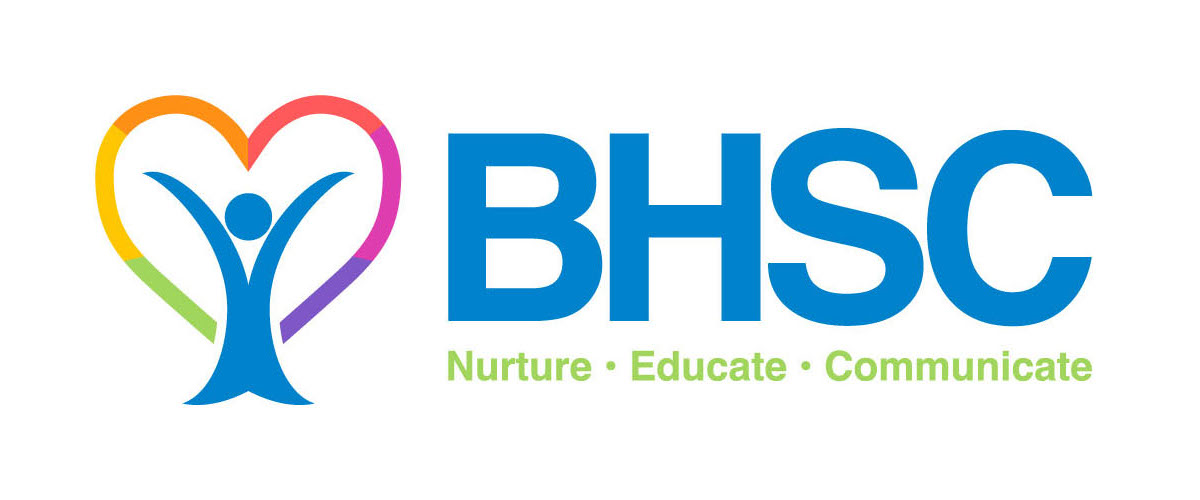The COVID pause has effected virtually every facet of life including how families are relating to one another with the reality that children are not in school and are not able to go out and socialize as they did pre-COVID. There is stress on both parents and children that these new living conditions have put on us all.
One of the areas that is top of mind today is social distancing which sets parameters of how we relate in physical space with one another. COVID is literally stealing loving touch and hugs. I know that on the few occasions where I get to see my children and grandchildren, saying hello or goodbye without hugs feels unnatural and I feel empty when that doesn’t happen. I know children too are missing these grandparent hugs along with the supportive touches they get in school from their teachers and classroom staff as well.
Recently, I listened to a story from an adult child whose dad was in a nursing home that she hasn’t seen (nor hugged) in four months due to COVID restrictions. As she spoke about that circumstance, her sadness was palpable to me on how deeply she longed for and missed that important interaction with her elderly dad. Understanding the reason why we can’t hug and touch those we love during this pandemic is one thing. Dealing with the effects of that are still proving very difficult for many.
Some say we’re having “skin hunger.” Others refer to it as hug deprivation or touch starvation. While we all vary in terms of what kind of touch we need, studies have long shown that expressions of affection — whether you give or receive them- have real and measurable health and wellness impacts on our physical and mental health. A variety of touches- from hugs to handshakes, a pat on the arm, back or head, kisses on the cheek, or hand-holding- affect us positively on both our physical and mental health sides of well-being. Touch is our reinforcement to connections, both social and emotional. Without them, or with limitations, we may see or experience changes to our physical and mental health status.
In this blog with COVID social changes as a backdrop to discussing touch and connection, I want to talk more generally for a moment about the science around the need for touch for all humans regardless of age. Let me begin with some of the boring science stuff around human touch and physical contact.
Years back prior to the COVID-19 worldwide pandemic, I recall some very vivid memories of visiting Romanian, Chinese and Russian orphanages in the mid 1990’s and thinking that the infants and toddlers looked and acted so disconnected from the adults around them- in large part because they received little or no physical nurturing in the form of holding, hugging and touching. I can still see the vacant stares in their eyes, their lack of movement and the dispirited emotional contact with their caretakers. Their physical, social and emotional growth was stunted as a result of lack of touch and nurturing from the adults around them.
With those pictures of my time in orphanages on my mind I began thinking about some ideas for this blog; I pulled out an old copy of a favorite book of mine- “Peoplemaking” by Virginia Satir. Satir was a psychotherapist who is regarded as the “mother” of modern Family Therapy. Back in the 70’s she became somewhat of pioneer in talking about “skin hunger” in our culture as a growing trend. You may be familiar with a famous quote of hers, “We need 4 hugs a day for survival; we need 8 hugs a day for maintenance; we need 12 hugs a day for growth.” Whether those exact numbers have been scientifically proven remains to be seen, but there is a great deal of methodical evidence related to the importance of hugs and physical contact for people of all ages…but especially children.
First, we know that physical touch stimulates Oxytocin production which is a neurotransmitter that acts on the limbic system (as one of its benefits), the brain’s emotional center, promoting feelings of contentment, reducing anxiety and stress. This powerful hormone is stimulated and secreted into the bloodstream helping us feel good and balanced. While I am speaking about hormones check this out- Hugging/touching stimulates the thymus gland, which regulates and balances the body’s production of white blood cells, which help keep us healthy and disease free.
Oh, don’t let me forget to mention that touching also stimulates dopamine and serotonin production which do all kinds of things like make us feel happy, regulate sensations, elevates our of sense of pleasure, negates pain, soothes us, modifies our moods and even helps keep our hearts happy and healthy. Further, affection in the form of hugging and touch has a direct response on the reduction of stress which prevents many diseases.
The Touch Research Institute at the University Of Miami School Of Medicine says it has carried out more than 100 studies into touch and found evidence of significant effects, including faster growth in premature babies, reduced pain, decreased autoimmune disease symptoms, lowered glucose levels in children with diabetes, and improved immune systems in people with cancer.
My last cool science fact (although there is even more scientific proof of hugging/touching benefits) is that touch gives us parasympathic balance. Hugs balance out the nervous system. The skin contains a network of tiny, egg-shaped pressure centers called Pacinian corpuscles that can sense touch and which are in contact with the brain through the vagus nerve. The galvanic skin response of someone receiving and giving a hug shows a change in skin conductance. The effect in moisture and electricity in the skin suggests a more balanced state in the nervous system…touching calms us and connects us to others.
OK, now that the compelling science is out of the way, let me talk about hugs and touch from a social-emotional perspective especially as it relates to our children. Around four decades ago societal changes around customs and taboos regarding how we touch our children began to permeate parenting via policy and procedural changes in community organizations. Cases of child sexual abuse in many different historically trusted community places in society began a national dialogue on this topic.
The pendulum was swinging away from the customs, norms and boundaries around hugging and touching children of the immigrant parenting experience to a new accepted normal. A flood of public media child sexual abuse cases involving “trusted” adults in the Church, Boy Scouts, Coaching, Schools (to name a few) ushered in new cultural phrases like: “stranger danger” and “good touch-bad touch”, all of which was leading to very guarded ways and much tighter boundaries around how, and how often, children would be touched by adults in this “new normal”.
Now this is very important to protect our children, but the consequences of that protection may have prompted adults to become so guarded that natural, normative hugging began to decrease in both trusted institutions (like schools where some teachers are instructed never to hug a child) and in parenting. Added to this cultural pendulum swing around the changing boundaries of hugging and touching are the gender differences with how we hug and touch our children.
Historically consistent studies have widely demonstrated that we hug and touch our daughters differently than we do our sons in terms of frequency, and, the age at which hugging begins to “drop out” is much earlier for boys. There is even study evidence that gender bias affects us as parents in that Moms typically hug more frequently and then Dads do. So what does this all mean? In my view, today ‘s cultural boundaries and gender variant practices around touch (along with COVID changes) are simply not giving our children enough hugs and touch to help satisfy all of the physical and emotional benefits that hugging and touching account for as children grow and develop.
Now this is a rather complex discussion and a somewhat slippery slope given the amount of child sexual abuse cases we have seen perpetrated over the past number of years. So, let me set my bottom line first in regards to this topic: Children are in possession of their own bodies, and have their own rights to withhold touch of their bodies- It’s a good boundary setting skill for them to develop early on. I think it’s appropriate to teach children that if they feel uncomfortable hugging or kissing “anybody,” at “any time,” they don’t have to. I think it’s inappropriate for children to be taught that they must consent to any kind of touch “in order to make other people happy or more comfortable.” In all things, a child should be given developmentally age appropriate control to set their own personal boundaries around touch. That is my bottom line.
But for this discussion I want to differentiate between normative developmentally appropriate touch and predatory or abusive touch. Here I am talking about the benefits of healthy hugs and touching as part of parenting and community nurturing. Our individual comfort with touching and being touched comes from our upbringing where there may be some influence of cultural bias one way or the other.
I grew up in an Italian family where touching and hugging is customary and expected. I had lots of hugging, gentle cheek pulling, pats on the head and back, sitting on laps and of course hello and goodbye hugs and kisses from everybody in the family (saying goodbye in an Italian family takes a while). So it is normal that people and families can range from very touchy-feely (lots of emoting and spontaneous touching) to “very cold (‘unemotional’), formal, polite, and reserved. Young children learn rules and attitudes like these over time from observing adults’ behavior more than from any kind of direct teaching.
The rules evolve from touch-responses like smiles, giggles, sighs, frowns, growls, flinches, scowls, and face and body language. To a very large extent, society and local culture, silently shapes child; and adult attitudes and behavioral rules about physical contact. In families the use of hugging and touch becomes very personal and stylized to the comfort levels of the parents.
It is natural that some moms and dads will be more touch connected than others. Is either choice wrong, from a science point of view- probably not. But whatever benefits may come from being raised in a low-touch environment, there are costs too. And those costs may be steep.
Most people understand that child neglect- including a lack of friendly, normative touch and physical affection- can cause serious developmental delays. What may be less obvious are the effects of milder deprivation- the disadvantages a hands off “playpen” child faces compared to someone who is raised in the traditional primate way where physical contact and touch are primary methods of communication, bonding and social-emotional development? In the short-term, an act of physical affection soothes anxiety, fear, and pain.
In the long-term, friendly touch influences brain development “programming” the body to react less dramatically to stress and pain. It may even reduce inflammation that can cause stomach and bowel irritations for the young child. The lesson here is to hug, touch and shower your children with affection. There can never be too much and you cannot go wrong. As your children grow and develop they will tell you when to “back it off”, like when a mom goes to kiss her 12 year old goodbye in front of classmates.
There are numerous ways to show how much we mean to one another. We have a marvelous opportunity literally at our fingertips to promote a sense of emotional security in our children. These small gestures we make carry significant meaning.
Generally, in this COVID moment in time, building connections can also ease feelings of loneliness and isolation. Video chats are a great way to do that. If that isn’t possible, you can evoke a similar feeling of connection by looking at a photo of someone while you talk to them on the phone. Mirror neurons are activated when we look at others’ facial expressions, which evokes a “mirrored” emotion and can make us smile. Even just looking at their photo while you talk can enhance the connection.
It is normal to struggle with the loss of touch. Touch is a legitimate physical and emotional need. With limitations on safe hugging and touching during the COVIS crisis, mindfulness activities may help you envision what it will feel like when you are able to finally hug the person you miss.
Writing in a journal to help process feelings of loss and sadness and getting outside to see other people, even if it’s from afar, can reduce feelings of loneliness and isolation. While it doesn’t take the place of a hug or touch, if you want to help someone from afar right now, be more intentional in your communication with them, rather than relying on big group chats on Zoom, so that they really feel seen and heard. We need to help people get creative about maintaining interactions that provide joy and contact. None of these become substitutions for touch, but even just waving to a neighbor to say hello can help you feel less isolated and alone.
Now before I leave, don’t let me forget to make a point to remind you that boys need this kind of contact from their moms and dads just as much as girls do. Unfortunately, research shows that girl infants less than a year old receive five times as much physical affection as do boy babies. Additionally, it has been shown that there is a “drop off” for boys and physical affection particularly from their fathers in the early teen years. Boys need to be held, cuddled, hugged, and kissed every bit as much as girls do, especially as young children, but also throughout their development into adulthood.
As I mentioned, I am an admitted a touchy-feely kind of guy, as is my family. That is the way I grew up in my Italian family and that is the way it is today in our family with my daughter, son and grandchildren. I have to say that there have been moments where a hug to one of them has been so emotionally significant to me that it is something I will never forget. I can only hope that the same kind of emotional bond, security and peace that I feel in these moments will live on in our family through the warm hugs from one another that we have all come to love and appreciate.
I know we will survive this current crisis. In the meantime let’s all be mindful and committed to try and understand how important touch is to children and adults as well- as we adjust to this new COVID normal.
Stay safe and Be well. joe cozzo




